In honor of Disability History Week, Where it’s AT has decided to look back and see the historical impact Assistive Technology (AT) has had on the disability community.
AT can be found broadly across history and covers such a wide scope of environmental adaptation that a blog covering it all simply isn’t feasible. As such, we’ve taken the approach of focusing on a single type of AT, one that has it’s roots deep in historical use: the Prosthetic.
Timeless Lore/Histories/Mythologies
Throughout the world there is vast lore depicting the use of prosthetics. In Greek Mythology, Pelops, son of Tantalus, as a result of typical mythological mischief, wears a prosthetic shoulder that Hephaestus made of ivory. While Aztec god of creation, Tezcatlipoca, wears a foot of obsidian after having lost his foot in battle. The Celtic king, Nuada, lost his arm in battle and, as a direct result, lost his kingship, but his silver prosthesis brought about the restoration of his kingship. In the one of the four sacred canonical texts of Hinduism, the Rigveda, Vishpala looses her leg in battle and is helped by the Ashvins, who give her a leg of iron.

https://commons.wikimedia.org/wiki/File:Tezcatlipoca.jpg / Unknown author / CC BY-SA (https://creativecommons.org/licenses/by-sa/3.0)- No alterations made.
The Cairo Toe – 1069 – 664 B.C.E.
One of the earliest verifiable instances of AT comes from ancient Egypt. Archeologists identified a prosthetic big toe, known as the Cairo Toe, fitted to female remains. The beauty of this discovery is not only the early implementation of prosthetics for functional use, as toes provide a great amount of ambulatory support, but the importance of prosthetics as a source of identity and pride. The big toe is necessary to wear the traditional sandals that Egyptians wore at the time, so rather than losing a sense of her Egyptian identity by utilizing a cheaper and simpler solution of simply wearing a different style of shoe, she went to the trouble of having a personalized prosthetic fashioned for herself, so she could continue participating in her culture’s practices. Additionally, the toe is exquisitely crafted, with the shape of the toe and it’s nail being carved with artistic care. This prosthetic was not simply a functional adaptation, it was an item imbued with pride and beauty.
Marcus Sergius – Early 200’s B.C.E.
Many centuries later, the Roman General, Marcus Sergius, lost his right hand during only his second campaign. To facilitate continuing his career, he had a hand of iron constructed for going into battle. This prosthesis enabled him to continue to hold his shield in battle. With this early use of AT, he raised the siege of Cremona, saved Placentia and captured twelve enemy camps in Gaul. Marcus Sergius was such a formidable soldier that he was captured twice by Hannibal, and escaped both times, despite being kept in chains and shackles every day.

1500’s C.E.
Ambroise Paré ushered in a new era in prosthetics, a field which had little to no forward progression for just under two millennia. The official royal surgeon under 4 kings, Paré was previously a battlefield surgeon who oversaw and performed amputations frequently. He witnessed wounded soldiers taking their lives rather than live with their injuries and decided to use his knowledge of human anatomy to engineer a new kind of prosthetic in order to aid his patients in transitioning to their newly changed bodies. He developed prosthetics which had a more refined element of functionality, creating prosthetic limbs that were lighter and easy to maneuver due to their leather and paper construction, rather than the previously used wood. He also was the first to make prosthetic limbs with adjustable straps and articulation, making them far more effective pieces of AT. He famously created a prosthetic hand which enabled a French army captain to ride into battle with the ability to grasp and release the reigns of his horse.
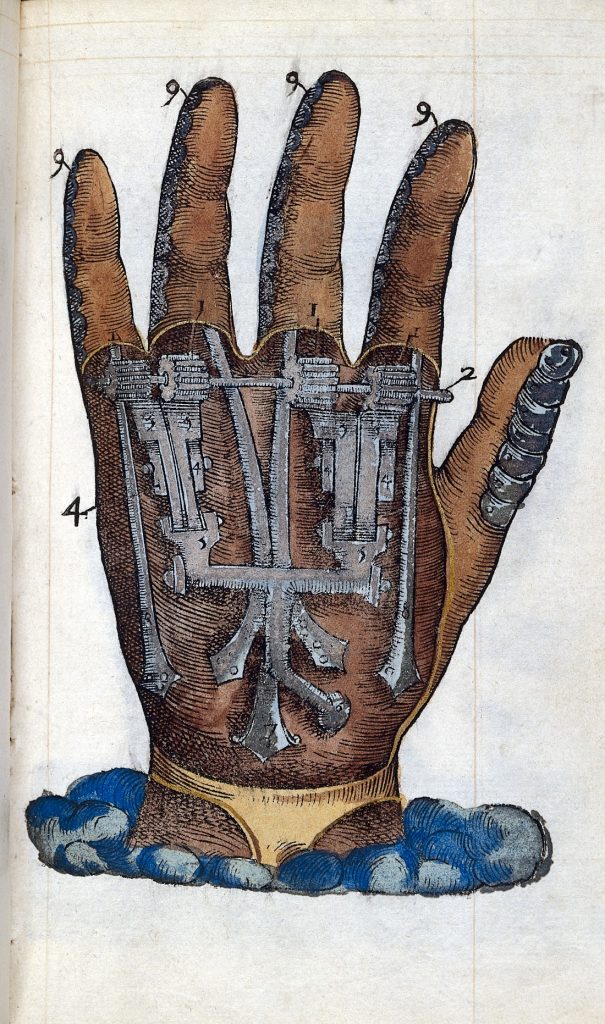
https://commons.wikimedia.org/wiki/File:Ambroise_Pare;_prosthetics,_mechanical_hand_Wellcome_L0023364.jpg
This file comes from Wellcome Images, a website operated by Wellcome Trust, a global charitable foundation based in the United Kingdom. Refer to Wellcome blog post / CC BY (https://creativecommons.org/licenses/by/4.0) No alterations made.
Mid 1800 to Early 1900’s C.E. – Wartime Amputees
The conjunction of modern medicine with industrial accidents and more frequent war resulted in many advancements in prosthetics. A natural result were higher instances of amputation with significantly higher survival rates for amputees.
Less than 2 days after enlisting in the Civil War, an 18-year-old engineering student named J.E. Hanger, became the first amputee of the war. He immediately began developing an improved design of prosthetic legs by utilizing rubber bumpers, rather than previously used catgut tendons or artificial cords: a technique which can still be found in today’s prosthetic feet. Within 6 months of his amputation, he had a functioning prototype which he named the “Hanger Limb’ and it was widely regarded as the most advanced prosthetic to date.
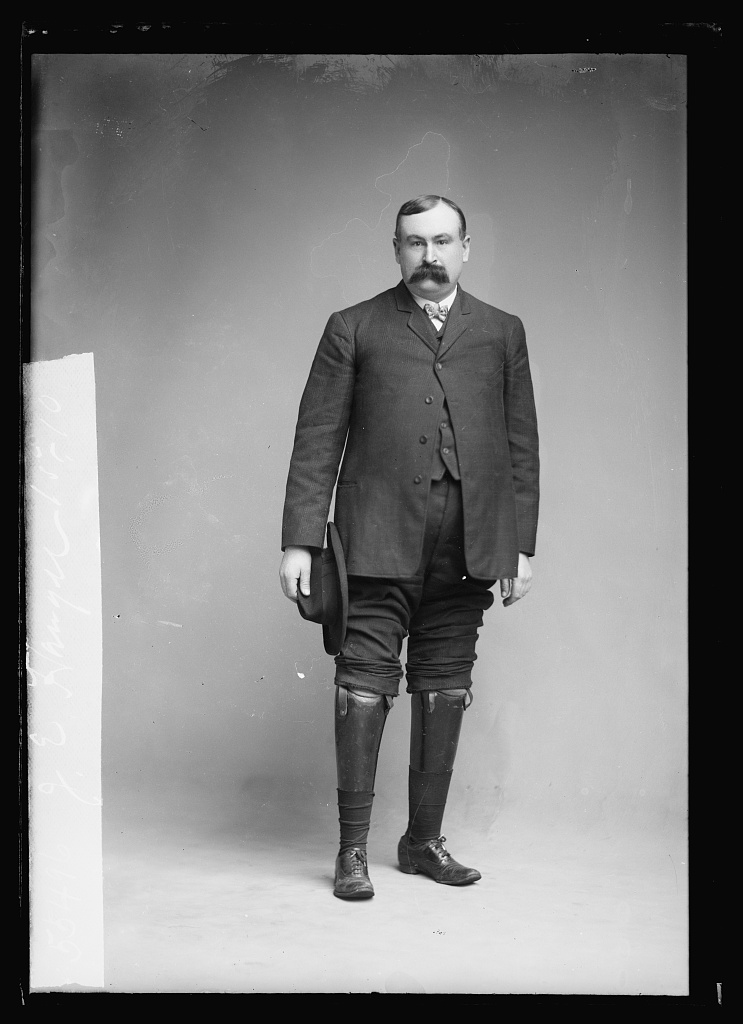
https://commons.wikimedia.org/wiki/File:James_Edward_Hanger.jpg
C. M. Bell Studio / Public domain
No alterations made.
Although his affiliation with the Confederacy is highly problematic for his legacy, his impact on the history of prosthetics cannot be ignored. He developed new technology which was pivotal to the field. He spent his life working with wounded soldiers, retiring at the turn of the century. When World War I broke out, ten years later, he returned from retirement in order to develop prosthetics for wounded English and French Allied soldiers. However, arguably the most interesting thing about J.E. Hanger was his participation in the engineering of prosthetics as a self-advocate, finding current technologies insufficient and taking charge of developing new assistive technology for the new community he embraced.
George Eyser – Late 1800- early 1900’s C.E.
George Eyser was a German-American immigrant who had most of his left leg amputated after a train accident. George was a gymnast, and competed in the 1904 Summer Olympics, He went on to earn six medals in a single day: 3 gold for the long horse vault, parallel bars, and 25-foot rope climb, two silver for the pommel horse and 4-event all-around, and a bronze for the horizontal bar. He utilized a wooden prosthesis which enabled him to compete, and get gold, in the long horse vault, an event which included a jump over a long horse without aid of a springboard.
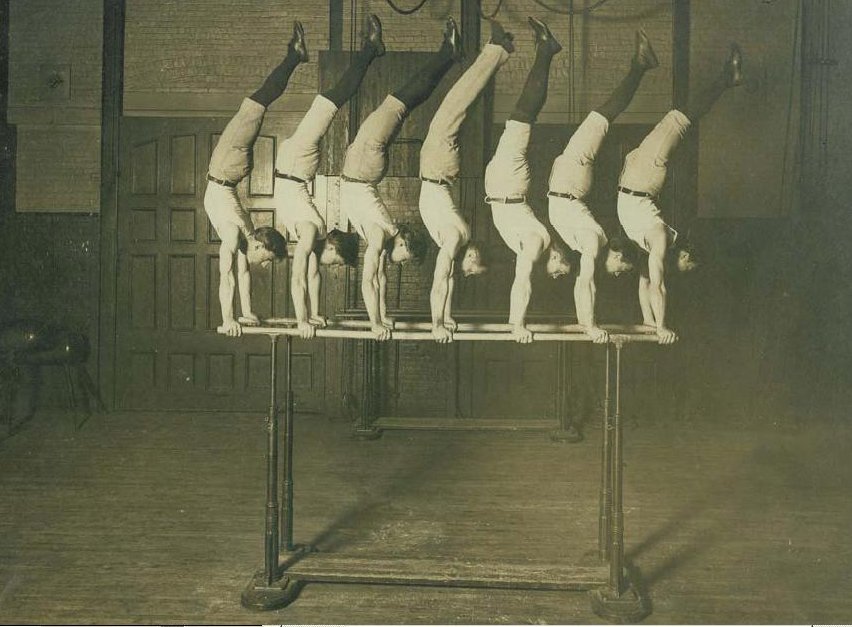
https://commons.wikimedia.org/wiki/File:GeorgeEyser3.JPG
Unknown author / Public domain
No alterations made.
1950’s- 1960’s C.E.– Thalidomide Impact
In 1956, the drug thalidomide began being prescribed to pregnant women as a sedative and medication for morning sickness. This was done without any testing being performed to ensure it would not impact the fetus they were carrying. Concerns regarding the drug and effects on a prenatal fetus began to rise, and in 1961 the drug was taken off the market. More than 10,000 children were born with a range of side effects resulting from the lack of safeguards taken to ensure the safety of the drug. The degree of impact and location on the body depended on how many days the drug was consumed into the pregnancy. If taken on day 20, the central brain was impacted, on day 21 the eyes were impacted, on day 22 the ears and face were impacted, on day 24 the arms were impacted, and on day 28 the legs would be impacted. There would be no impact to the fetus if taken after day 42.
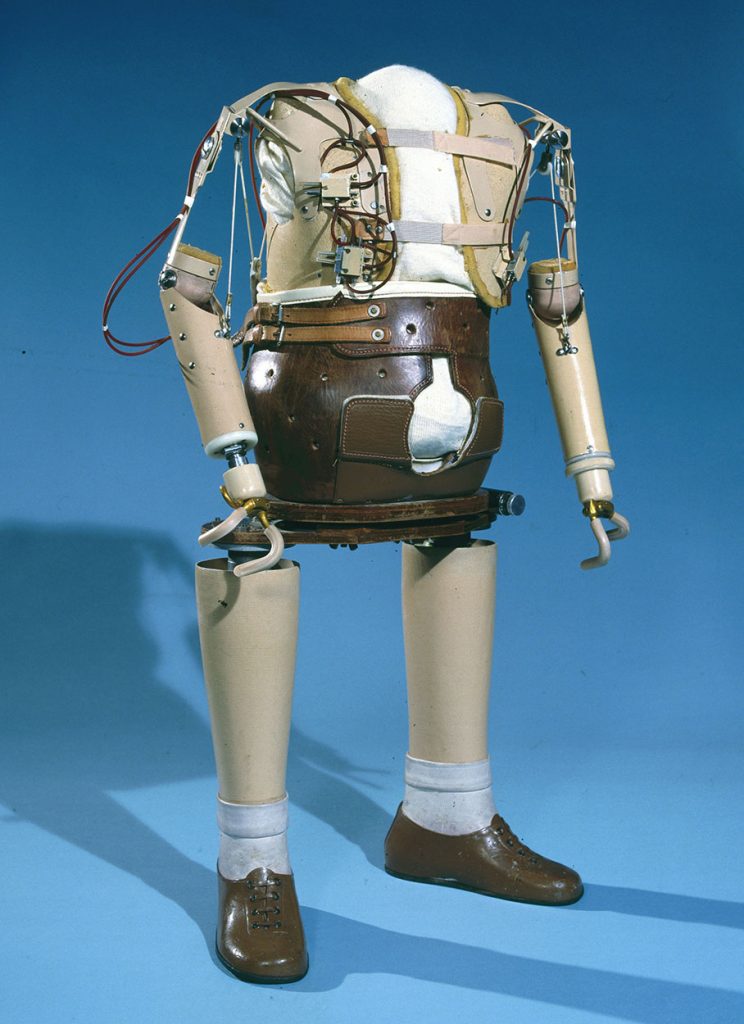
https://commons.wikimedia.org/wiki/File:Artificial_limbs_for_a_thalidomide_child,1961-1965.(9660575567).jpg / Science Museum London / Science and Society Picture Library / CC BY-SA (https://creativecommons.org/licenses/by-sa/2.0) No alterations made.
As a result of the medication, some infants were born with a condition named phocomelia, which produces, in general, undeveloped limbs and absent pelvic bones. Children were fitted for prosthetics and other AT, and taught in their use. As they grew, they were supplied with extension prostheses which assisted many children to more easily live lives of play and facilitate independence toward their adulthood.
Late 20th century – Now
The advancement of prosthesis technology has not slowed, with not only more fully functional but more and more beautiful designs being unveiled. We are seeing advancement in bio-limb resembling designs, intricate artistic interpretations, and designs which outdo the efficiency and form of biological human design. As we now move into an era where 3D printed prosthesis is becoming a viable option, the possibilities for widespread design by members of the community themselves is a certainty. With representation from Olympians and actresses like Amy Purdy, veterans and congresspeople like Tammy Duckworth and activists and athletes like Terry Fox, there is no telling what the future of prosthesis may be.
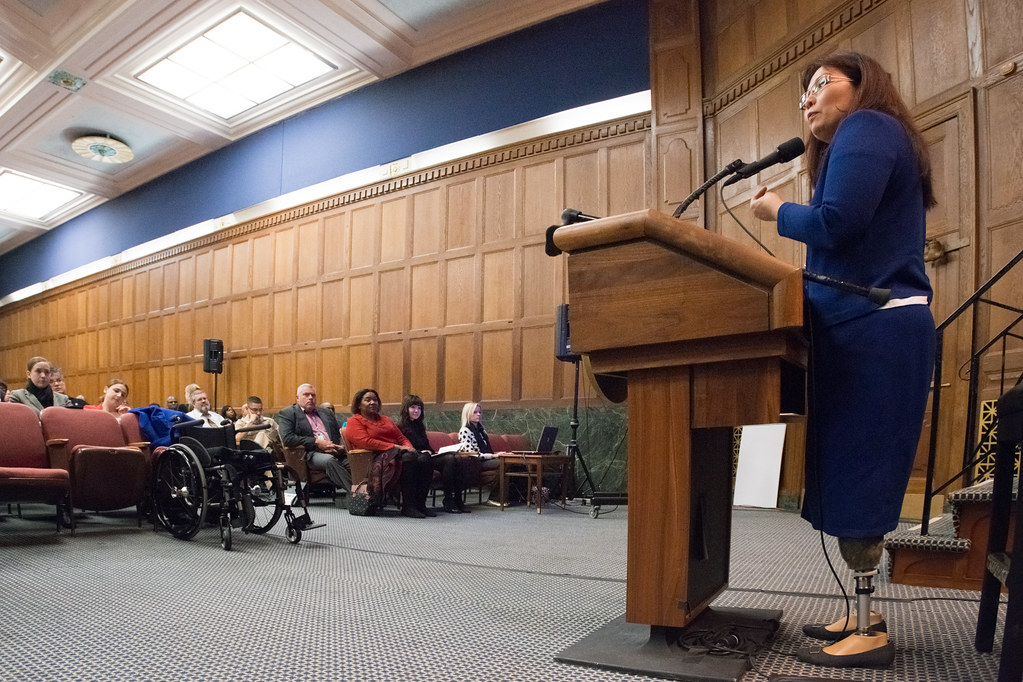
https://www.flickr.com/photos/usdagov/10967788273/
U.S. Department of Agriculture / Public Domain
No alterations made.

